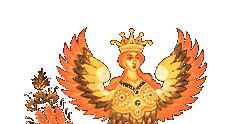Fedoskino and the Fedoskino Museum
Fedoskino is not far from Moscow, about forty-five minutes if not less once you get outside the city. This was the first time I was seeing the outer-Moscow countryside from the ground (got a great view from the plane), and the lingering winter made it breathtaking. Unlike the sprawling suburban landscape of Southern California where one town bleeds into the next, Russian cities are dense clusters of activity; leave their defined limits and you are instantly transported to a rural backdrop of forest and farmland. The yet pristine snow in the fields made for an interesting contrast with the bare birch trees standing at attention against the glistening white blanket before them. Nature creates beauty everywhere.
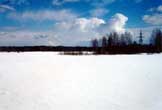  As we came up to the Fedoskino 'city limits' we stopped to take a picture of the road sign, but it was gone (for one reason or another). So instead we took some 'beauty shots' of the surrounds and then headed into the heart of the village. The main road leads past the church and right up to the factory. But our first stop was the home of the Alexander Yakunin and his wife. We looked at some of their works in progress, and also borrowed some incredible photographs that she had taken. Their home is situated directly across the street from the small church, and open fields are the view from the back of the house. An artist's eye was apparent in the pictures taken of different times of the year and different seasons.
As we came up to the Fedoskino 'city limits' we stopped to take a picture of the road sign, but it was gone (for one reason or another). So instead we took some 'beauty shots' of the surrounds and then headed into the heart of the village. The main road leads past the church and right up to the factory. But our first stop was the home of the Alexander Yakunin and his wife. We looked at some of their works in progress, and also borrowed some incredible photographs that she had taken. Their home is situated directly across the street from the small church, and open fields are the view from the back of the house. An artist's eye was apparent in the pictures taken of different times of the year and different seasons.
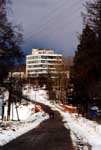 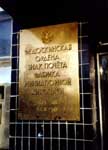 From there we drove up the road the short distance to the Fedoskino factory (fabrika in Russian from 'fabricate', which is different from a zavod which is more industrial--but in English it's the same word). And we were met with immediate disappointment. The woman who runs the museum inside the factory had already gone home and it was locked. So we got back in the car and headed over to the apartment of a woman who does polishing and lacquering. After gathering the boxes she had for us, she directed and accompanied us to the homes of several artists. Serendipity turned out to be on our side as we simply came across several people in the street whom we needed to see, including Alexey Valyalin and the husband of the museum director who called his wife and arranged for us to pick her up and bring her to the factory to show us around.
From there we drove up the road the short distance to the Fedoskino factory (fabrika in Russian from 'fabricate', which is different from a zavod which is more industrial--but in English it's the same word). And we were met with immediate disappointment. The woman who runs the museum inside the factory had already gone home and it was locked. So we got back in the car and headed over to the apartment of a woman who does polishing and lacquering. After gathering the boxes she had for us, she directed and accompanied us to the homes of several artists. Serendipity turned out to be on our side as we simply came across several people in the street whom we needed to see, including Alexey Valyalin and the husband of the museum director who called his wife and arranged for us to pick her up and bring her to the factory to show us around.
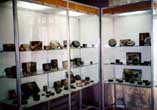 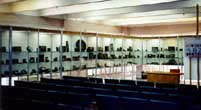 The Fedoskino museum is located on the second floor of the factory, in a single large room. The collection there is a collector's dream. The museum operator, although aware that we were knowledgeable in lacquer art, nonetheless would occasionally slip into tour guide mode as she explained the history of lacquer art, or the materials used to create a lacquer miniature.
The Fedoskino museum is located on the second floor of the factory, in a single large room. The collection there is a collector's dream. The museum operator, although aware that we were knowledgeable in lacquer art, nonetheless would occasionally slip into tour guide mode as she explained the history of lacquer art, or the materials used to create a lacquer miniature.
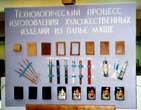 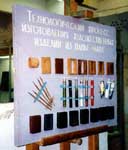 But she was very informative about the specific pieces in the museum, as well as on artists both living and dead. I so much wanted to handle the pieces behind the glass displays, to pour over their every inch and scrutinously examine every brush stroke. These were pieces I had seen in all the Fedoskino books in our office library, and I was beholding them firsthand. Immaculate Vishnaykov pieces, early Fedoskino pieces, beautiful samples by masters of yesterday and today. Several shelves were taken up by works of a single author, such greats as Soloninkin, Puchkov, Pashinin, and too many others to name.
But she was very informative about the specific pieces in the museum, as well as on artists both living and dead. I so much wanted to handle the pieces behind the glass displays, to pour over their every inch and scrutinously examine every brush stroke. These were pieces I had seen in all the Fedoskino books in our office library, and I was beholding them firsthand. Immaculate Vishnaykov pieces, early Fedoskino pieces, beautiful samples by masters of yesterday and today. Several shelves were taken up by works of a single author, such greats as Soloninkin, Puchkov, Pashinin, and too many others to name.
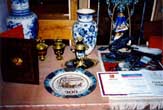 The tour was time very well spent. We thanked the museum operator profusely for taking the time to show us around, and she in turn thanked us for our interest and insight into Fedoskino lacquer art; we had several interesting discussions about style and skill, and artists in general. From there, we went again to visit various artists, such as the jolly couple of Yuriy Dubovikov and Nina Pershina. Several turned out to be not home--we learned that a lot of the younger men in Fedoskino had headed out to play a soccer match with a 'visiting team' from another village, and would be gone all day.
We did visit with Sergey and Marina Rogatov. Marina showed us their collective works in progress, including one amazing piece that they would be offering at $4,000. Although Marina declined to have her picture taken for our database, she did provide several prior photos of herself and Sergey for us to scan and return. We also had to explain (as we do every time) the idea of the artist database. The artists have a very limited view of the commercial chain of lacquer art, and it takes a leap of faith sometimes to understand that there are collectors in America and other parts of the world who buy their art and know their names. Having a page on our website with their name and their biography helps the collectors familiarize themselves not only with the artist's name and work, but who they are. This in turn can lead to further purchases of the artist's work. 'Ah, ok, the Internet I don't understand, but buying more boxes is something good!' was usually the conclusion of the discussion.
The tour was time very well spent. We thanked the museum operator profusely for taking the time to show us around, and she in turn thanked us for our interest and insight into Fedoskino lacquer art; we had several interesting discussions about style and skill, and artists in general. From there, we went again to visit various artists, such as the jolly couple of Yuriy Dubovikov and Nina Pershina. Several turned out to be not home--we learned that a lot of the younger men in Fedoskino had headed out to play a soccer match with a 'visiting team' from another village, and would be gone all day.
We did visit with Sergey and Marina Rogatov. Marina showed us their collective works in progress, including one amazing piece that they would be offering at $4,000. Although Marina declined to have her picture taken for our database, she did provide several prior photos of herself and Sergey for us to scan and return. We also had to explain (as we do every time) the idea of the artist database. The artists have a very limited view of the commercial chain of lacquer art, and it takes a leap of faith sometimes to understand that there are collectors in America and other parts of the world who buy their art and know their names. Having a page on our website with their name and their biography helps the collectors familiarize themselves not only with the artist's name and work, but who they are. This in turn can lead to further purchases of the artist's work. 'Ah, ok, the Internet I don't understand, but buying more boxes is something good!' was usually the conclusion of the discussion.
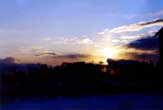 Our final stop was at a nice old lady who worked as a polisher, and who was just putting the finishing touches on some beautiful boxes. With the sun having made its way beyond the horizon, it was time for us to make our way back to Moscow. But I feel as though I took a part of Fedoskino with me--something that I'll never lose.
Click here for the next selection from the trip
Our final stop was at a nice old lady who worked as a polisher, and who was just putting the finishing touches on some beautiful boxes. With the sun having made its way beyond the horizon, it was time for us to make our way back to Moscow. But I feel as though I took a part of Fedoskino with me--something that I'll never lose.
Click here for the next selection from the trip |

